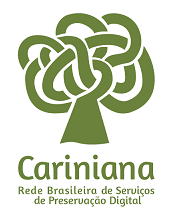Antimicrobial activity of oregan and clove essential oils against some foodborne pathogens
DOI:
https://doi.org/10.5433/1679-0367.2020v41n1p3Keywords:
Disk-diffusion method, Minimal inhibitory concentrations, Natural antimicrobials.Abstract
The tendency to replace synthetic antimicrobials for natural ones in food industry and an increase in bacterial resistance to antibiotics resulted in a necessity to find new alternatives, and essential oils are emerging as promising substitutes for synthetic chemicals in food preservation. The objective of this work was to test the antimicrobial activity of oregano (OEO) and clove (CEO) essential oils over a range of bacteria, molds and yeast of importance as pathogens or food spoilage. The antimicrobial activity of oregano and clove essential oils were analyzed by disk diffusion method and broth microdilution test (MIC) of OEO and CEO were determined for each tested microorganism. OEO and CEO were evaluated in natura (IN) and after thermal processing (TP) at 120 o C for 5 min. Both OEO and CEO presented the same inhibition zones for IN and TP samples, for all tested microorganisms, indicating that these oils can be thermally processed maintaining their antimicrobial activity. For OEO and CEO, the more sensitive microorganisms were the fungi (Aspergillus niger, Penicillium citrinum and Candida albicans), followed by Staphylococcus aureus, Bacillus cereus and Methicillin - resistant Staphylococcus aureus (MRSA); the lowest antimicrobial activities were observed against Streptococcus mutans and Enterococcus faecalis. In general, OEO resulted in higher inhibition zones and lower MIC values for all tested microorganisms, suggesting that it was more effective as an antimicrobial agent than CEODownloads
References
2 Health Surveillance Secretariat. Outbreaks of transmitted diseases by food in Brazil [Internet]. . Available at: http://portal.saude.gov.br/. Accessed November 2018. Http://portalarquivos2.saude.gov.br/images/pdf/2018/julho/02/Apresentacao-Surtos-DTA-Junho-2018.pdf
3 Falcó I, Verdeguer M, Aznar R, Sánchez G, Randazzo W. Sanitizing food contact surfaces by the use of essential oils. Innov Food Sci Emerg Technol. 2019 Jan; 51:220-228. doi: 10.1016/j.ifset.2018.02.013
4 Aktar MS, Degaga B, Azam T. Antimicrobial activity of essential oils extracted from medicinal plants against the pathogenic microorganisms: a review. Issues Biol Sci Pharm Res. 2013 Jan;2(1):1-7.
5 Burt S. Essential oils: their antibacterial properties and potential applications in foods-a review. Int J Food Microbiol. 2004 Ago;94(3):223-53. doi: 10.1016/j.ijfoodmicro.2004.03.022
6 Khayyat SA, Roselin LS. Recent progress in photochemical reaction on main components of some essential oils. J Saudi Chem Soc. 2018 Nov;22(7):855-75. doi: 10.1016/j.jscs.2018.01.008
7 Dutra TV, Castro JC, Menezes JL, Ramos TR, do Prado IN, Machinski M, et al. Bioactivity of oregano (Origanum vulgare) essential oil against Alicyclobacillus spp. Ind Crops Prod. 2019 Mar;129:345-9. doi: 10.1016/j.indcrop.2018.12.025
8 Gómez-Estaca J, López de Lacey A, López-Caballero ME, Gómez-Guillén MC, Montero P. Biodegradable gelatin-chitosan films incorporated with essential oils as antimicrobial agents for fish preservation. Food Microbiol. 2010 Oct;27(7):889-896. doi: 10.1016/j.fm.2010.05.012
9 Dong L, Tong Z, Linghu D, Lin Y, Tao R, Liu J, Tian Y, Ni L. Effects of sub-minimum inhibitory concentrations of antimicrobial agents on Streptococcus mutans biofilm formation. Int J Antimicrob Ag 2012 May;39(5):390-5. doi: 10.1016/j.ijantimicag.2012.01.009.
10 Michelin DC, Moreschi PE, Lima AC, Nascimento GGF, Paganelli MO, Chaud MV. Avaliação da atividade antimicrobiana de extratos vegetais. Rev Bras Farmacogn. 2005 Oct-Dec;15(4):316-20. doi: 10.1590/S0102-695X2005000400010
11 Yoshida, A., Kuramitsu, H. K. Multiple Streptococcus mutans genes are involved in biofilm formation. Appl. Environ. Microb. 2012 Dec;68:6284-91. doi: 10.1128/AEM.68.12.6283-6291.2002.
12 Chouhan S, Sharma K, Guleria S. Antimicrobial activity of some essential oils—present status and future perspectives. Medicines. 2017 Sep;4(3):1-21. doi:10.3390/medicines4030058.
13 Ribeiro-Santos R, Ventura LAF, Santos DC, Melo NR, Costa BS. Effects of oregano, cinnamon, and sweet fennel essential oils and their blends on foodborne microorganisms. IFRJ. 2018 Apr;25(2):540-4.
14 Omidbeygi M, Barzegar M, Hamidi Z, Naghdibadi H. Antifungal activity of thyme, summer savory and clove essential oils against Aspergillus flavus in liquid medium and tomato paste. Food Control. 2007 Dec;18(12):1518-23. doi: 10.1016/j.foodcont.2006.12.003
15 Kocic-Tanackov S, Dimic G, Tanackov I, Pejin D, Mojovic L, Pejin J. The inhibitory effect of oregano extract on the growth of Aspergillus spp. and on sterigmatocystin biosynthesis. LWT - Food Sci Technol. 2012 Nov;49(1):14-20. doi: :10.1016/j.lwt.2012.04.013
16 Serra E, Hidalgo-Bastida L, Verran J, Williams D, Malic S. Antifungal activity of commercial essential oils and biocides against Candida Albicans. Pathogens. 2018 Jan;7(1):1-15. doi:10.3390/pathogens7010015
17 Alvarez MV, Ortegaâ€Ramirez LA, Silvaâ€Espinoza BA, Gonzalezâ€Aguilar GA, Ayalaâ€Zavala JF. Antimicrobial, antioxidant, and sensorial impacts of oregano and rosemary essential oils over broccoli florets. J Food Process Preserv. 2019 Mar;43(3):e13889. doi: doi.org/10.1111/jfpp.13889
18 Khalil N, Ashour M, Fikry S, Singab AN, Salama O. Chemical composition and antimicrobial activity of the essential oils of selected apiaceous fruits. Future J Pharm Sci. 2018 Jun;4(1):88-92. doi: 10.1016/j.fjps.2017.10.004
19 Ryu V, McClements DJ, Corradini MG, McLandsborough L. Effect of ripening inhibitor type on formation, stability, and antimicrobial activity of thyme oil nanoemulsion. Food Chem. 2018 Apr;245:104-11. doi: 10.1016/j.foodchem.2017.10.084
Downloads
Published
How to Cite
Issue
Section
License
Copyright (c) 2020 Semina: Ciências Biológicas e da Saúde

This work is licensed under a Creative Commons Attribution-NonCommercial 4.0 International License.
adopts the CC-BY-NC license for its publications, the copyright being held by the author, in cases of republication we recommend that authors indicate first publication in this journal.
This license allows you to copy and redistribute the material in any medium or format, remix, transform and develop the material, as long as it is not for commercial purposes. And due credit must be given to the creator.
The opinions expressed by the authors of the articles are their sole responsibility.
The magazine reserves the right to make normative, orthographic and grammatical changes to the originals in order to maintain the cultured standard of the language and the credibility of the vehicle. However, it will respect the writing style of the authors. Changes, corrections or suggestions of a conceptual nature will be sent to the authors when necessary.
This Journal is licensed with a license Creative Commons Assignment-NonCommercial 4.0 International.

















